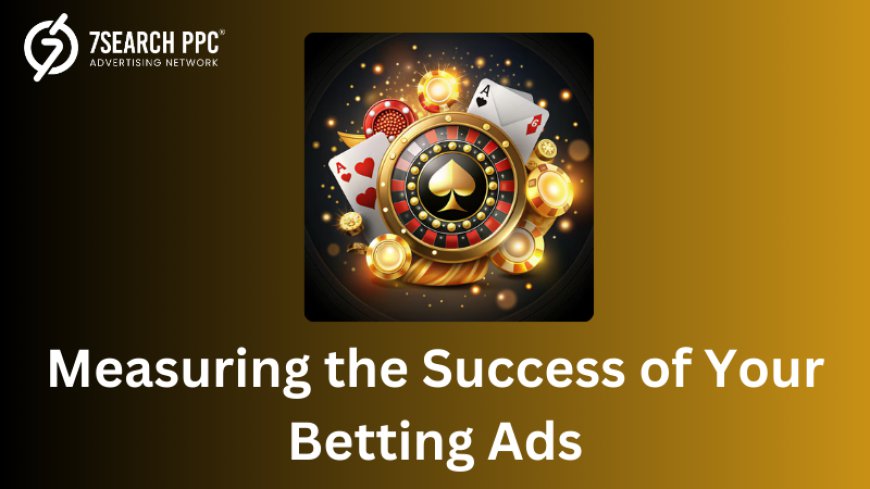How Betting Ads Can Skyrocket Your Gambling Traffic in 2024
Betting ads refer to promotional content designed to attract potential gamblers to online betting platforms. These ads can take various forms, including display ads, video ads, social media promotions, and search engine ads.
In the competitive landscape of the online gambling industry, attracting quality traffic is essential for growth and profitability. With the rise of digital marketing, betting ads have emerged as a powerful tool for casinos and gambling platforms looking to increase visibility and drive conversions. As we move into 2024, understanding how to effectively leverage betting ads can be the key to skyrocketing your gambling traffic.
This article will explore the various aspects of betting ads, including strategies for effective implementation, the role of ad networks, and how these ads can significantly boost your gaming traffic.

The Importance of Betting Ads in Gambling Marketing
Understanding Betting Ads
Betting ads refer to promotional content designed to attract potential gamblers to online betting platforms. These ads can take various forms, including display ads, video ads, social media promotions, and search engine ads. They serve multiple purposes, such as informing potential customers about new games, enticing them with bonuses, or encouraging them to sign up for an account.
Why Betting Ads Matter
- Increased Visibility: In a crowded market, betting ads help your brand stand out and reach a broader audience.
- Targeted Marketing: These ads can be tailored to specific demographics, interests, and behaviors, ensuring that your marketing efforts reach the right people.
- Higher Conversion Rates: Well-crafted betting ads can convert casual visitors into loyal customers by showcasing what sets your platform apart.
- Measurable Results: With digital marketing, you can track the performance of your ads in real-time, allowing you to adjust your strategies based on data.
Strategies for Effective Betting Ads
To effectively harness the power of betting ads, consider implementing the following strategies:
Define Your Target Audience
Before launching a campaign, it’s crucial to identify your target audience. Understanding who your potential customers are will guide your ad creation and placement.
Demographics to Consider
- Age: Different age groups may respond to different types of ads. For example, younger audiences may be more inclined to engage with social media promotions.
- Location: Geographic targeting can help you reach users in specific regions where online betting is popular or legal.
- Interests: Analyze the interests of your target demographic to tailor your messaging and creative.
Choose the Right Ad Network
Selecting the right ad network is crucial for reaching your target audience effectively. An ad network acts as a bridge between advertisers and publishers, facilitating the display of your betting ads across various platforms.
Popular Ad Networks for Betting Ads
- Google Ads: Ideal for search ads and display ads, Google allows you to target users actively searching for betting options.
- Facebook Ads: A great platform for reaching a wide audience through visually engaging content.
- Gambling-Specific Ad Networks: Networks like TrafficStars, JuicyAds, and Adcash specialize in gambling ads, providing access to a niche audience.
Craft Compelling Ad Copy
The copy in your betting ads plays a crucial role in capturing attention and driving clicks. Here are some tips for crafting effective ad copy:
Key Elements of Effective Ad Copy
- Clear Value Proposition: Highlight what makes your betting platform unique. This could be generous bonuses, a wide selection of games, or exclusive features.
- Strong Call to Action (CTA): Use action-oriented language to encourage users to take the next step, such as "Sign Up Now" or "Claim Your Bonus Today."
- Emotional Appeal: Connect with your audience emotionally by emphasizing excitement, fun, and the potential for winning.
Utilize Eye-Catching Visuals
Visual elements are just as important as the text in your betting ads. High-quality images or videos can significantly enhance engagement and conversion rates.
Types of Visuals to Use
- Game Previews: Showcase popular games through short video clips to pique interest.
- Promotional Graphics: Create visually appealing banners that highlight bonuses or limited-time offers.
- Branding: Ensure that your visuals align with your brand identity for consistency and recognition.
Optimize for Mobile
With the growing number of users accessing betting platforms via smartphones, it’s essential to optimize your betting ads for mobile devices.
Mobile Optimization Tips
- Responsive Design: Ensure that your ads display correctly on various screen sizes.
- Short and Snappy: Mobile users often prefer quick information, so keep your copy concise.
- Clickable CTAs: Make sure your CTAs are easy to click on mobile devices for a seamless user experience.
Measuring the Success of Your Betting Ads

To understand the effectiveness of your betting ads, you need to measure their performance. Here are some key metrics to track:
Click-Through Rate (CTR)
CTR measures how many people clicked on your ad compared to how many times it was shown. A higher CTR indicates that your ad is engaging and relevant to your audience.
Conversion Rate
The conversion rate shows how many users completed a desired action, such as signing up or making a deposit, after clicking on your ad. This metric is crucial for evaluating the overall effectiveness of your betting ads.
Return on Investment (ROI)
Calculating your ROI helps you determine whether your betting ad campaigns are profitable. By comparing the revenue generated from new players against the cost of your ad spend, you can assess the effectiveness of your strategies.
Challenges in Gambling Marketing
While betting ads can significantly boost your gaming traffic, there are challenges unique to gambling marketing that need to be addressed.
Regulatory Compliance
The gambling industry is heavily regulated, and advertising practices may vary by jurisdiction. Ensure that your ads comply with local laws to avoid penalties or bans.
Competition
The online gambling market is saturated, making it essential to differentiate your brand and offer unique value propositions in your betting ads.
Ad Fatigue
Frequent exposure to the same ads can lead to ad fatigue, causing users to become desensitized. Regularly refresh your ad creative to keep your messaging engaging and relevant.
Future Trends in Betting Ads for 2024
As we move further into 2024, certain trends are likely to shape the landscape of betting ads and gambling marketing.
Increased Use of AI and Personalization
Artificial intelligence (AI) is expected to play a more significant role in gambling marketing. AI can analyze user data to deliver personalized ads based on user behavior and preferences, enhancing engagement.
Enhanced Video Marketing
Video content will continue to dominate digital marketing. Short, engaging video ads showcasing gameplay, promotions, and testimonials can capture attention and drive conversions.
Integration of Virtual and Augmented Reality
Virtual reality (VR) and augmented reality (AR) technologies are emerging as innovative tools for gambling marketing. They can provide immersive experiences that attract users to your platform, making them feel more connected to the games.
Conclusion
Betting ads have the potential to significantly boost your gambling traffic ads when implemented effectively. By understanding your target audience, leveraging the right ad networks, and crafting compelling messaging, you can attract quality traffic that converts into loyal players.
As the gambling industry evolves, staying ahead of trends and challenges will be crucial. Embrace innovations such as AI, video marketing, and immersive technologies to ensure your advertising strategies remain relevant and effective.
Frequently Asked Questions (FAQ)
What are betting ads?
Ans. Betting ads are promotional advertisements specifically designed to attract users to online gambling platforms. They can take various forms, including display ads, video ads, social media promotions, and search engine ads. The goal is to increase visibility and drive conversions for betting websites.
Why are betting ads important for gambling marketing?
Ans.Betting ads are crucial because they help online casinos and betting platforms stand out in a competitive market. They enable targeted marketing, higher conversion rates, and measurable results, which are essential for effective advertising strategies in the gambling industry.
What strategies can I use for effective betting ads?
Ans. To create effective betting ads, consider the following strategies:
- Define your target audience based on demographics, location, and interests.
- Choose the right ad network, such as Google Ads or gambling-specific networks.
- Craft compelling ad copy with a clear value proposition and strong call to action.
- Utilize eye-catching visuals to enhance engagement.
- Optimize ads for mobile devices to reach users on smartphones.
How can I measure the success of my betting ads?
Ans. Key metrics for measuring the success of your betting ads include:
- Click-Through Rate (CTR): Indicates how many people clicked on your ad.
- Conversion Rate: Measures how many users completed a desired action after clicking.
- Return on Investment (ROI): Compares the revenue generated from new players to the cost of your ad spend.
What challenges should I be aware of in gambling marketing?
Ans. Challenges in gambling marketing include:
- Regulatory compliance, as gambling advertisements are heavily regulated in many jurisdictions.
- Intense competition in the online gambling market.
- Ad fatigue, where users become desensitized to repeated ads.
What are the future trends in betting ads for 2024?
Ans. Future trends in betting ads for 2024 include:
- Increased use of AI for personalized advertising.
- Enhanced video marketing as a dominant form of content.
- Integration of virtual reality (VR) and augmented reality (AR) technologies for immersive experiences.
